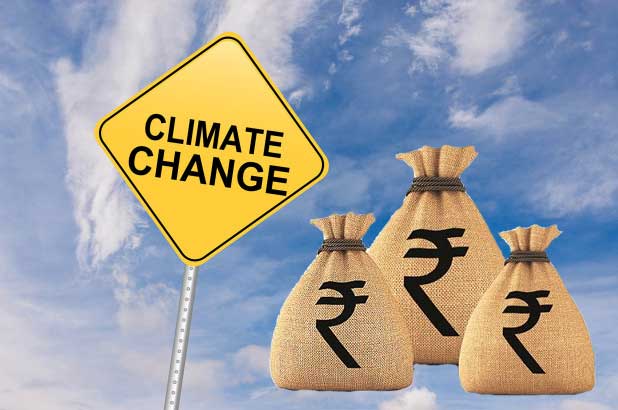

Four years after world leaders negotiated the Paris Climate Agreement, national policies and market signals are starting to reflect the urgency of increasing finance into areas of the economy that address climate change. However, a new study shows that while investments in climate action have been steadily increasing, it remains far short of the economy-wide transformation required.
The Climate Policy Initiative (CPI)’s Global Landscape of Climate Finance 2019 shows that global climate finance reached a record high of USD 612 billion in 2017, driven by renewable energy and lower-carbon transport capacity additions in China, the U.S., and India, as well as increased public commitments to land use and energy efficiency. This was, however, followed by an 11 percent drop in 2018 to USD 546 billion attributed mostly to reduced public money for low-carbon transport and lower private investment in renewable energy.
Taking into account annual fluctuations, average annual climate investment across 2017/2018 was 25 percent higher than during 2015/2016. This trend reflects steady increases in financing across nearly all types of investors. Increases are concentrated in low-carbon transport (by sector) and North America and East Asia (by region). Just under one-quarter of the increase from 2015/2016 to 2017/2018 was due to the incorporation of new data sources into the study.
“Given the urgency of the climate challenge, it is a positive sign that we have passed the half-trillion-dollar mark of investment towards climate change activities,” said Dr. Barbara Buchner, executive director of Climate Finance at CPI. “Still, this is simply not enough, especially as investments in polluting industries continue to effectively cancel out these efforts to address climate change. Leaders should be focused on total economic transformation.”
The study indicates, by comparison, estimates of the investment required to achieve global climate change goals. These estimates include a range of USD 1.6 trillion to USD 3.8 trillion needed annually between 2016 and 2050 for supply-side energy system investments from the IPCC (2018) and adaptation costs of USD 180 billion annually from 2020 to 2030 from the Global Commission on Adaptation (2019).
The report reveals that a vast majority of tracked climate finance continues to flow towards activities for mitigation, and in particular to renewable energy and low-carbon transport, sectors that have demonstrated commercially viable technologies. Decreasing technology costs in these areas also means each dollar in these sectors is going further toward reducing emissions.
“It’s clear from our work that public and private actors must coordinate to move faster into sectors beyond the renewable generation,” said Dr. Angela Falconer, Associate Director at Climate Policy Initiative. “While investments must also continue in renewables and other commercially viable sectors, we see large gaps in energy efficiency, adaptation, food, and technology and research.”
Source: Saurenergy.com
In a significant move toward advancing green energy and industrial growth in the state, Himachal…
Golabl chemical conglomerate BASF has announced that its now offering the world’s first biomass-balanced polyethersulfone…
In a crucial stint to bolster the biogas sector and sustainable dairying in the country,…
TotalEnergies SE has received approval to proceed with its Middlebrook solar and battery project in…
Andhra Pradesh Chief Minister Chandrababu Naidu has inaugurated the Rs 1,000-crore green hydrogen plant of…
The BITS Pilani has developed an innovative solution for managing landfill leachate, domestic septage, and…